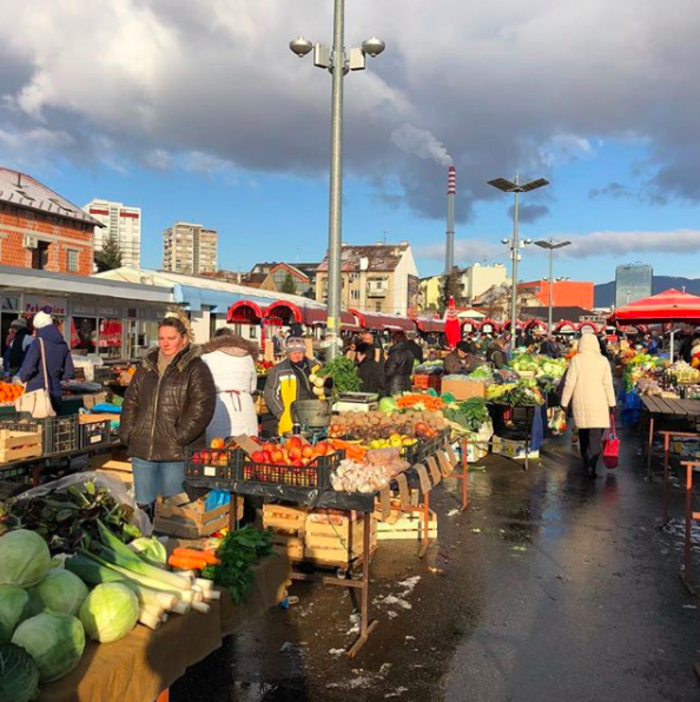
An Experience Lasting Longer Than a Single Selfie – On the Role of Architecture in Destination Branding
Once one sets foot on Stradun in Dubrovnik, no matter on which side, one becomes overwhelmed with a very particular feeling. To be there, in the midst of those magnificent proportions, not too small and not too large, surrounded by the stone whose colour and texture emanates a kind of perfection is a magnificent moment. A person can really feel privileged to be taking a stroll in the old city of Dubrovnik. Conversely, it is a completely different experience to walk along the small streets surrounding Trešnjevka Square in Zagreb where buildings were first designed and constructed only to have partitions and additions attached to them afterwards and all that in line with some momentary necessity and without a shred of long-term planning or any healthy space in-between them. It makes no difference if one is on Bisačka, Gotalovečka or Grebengradska Street, sidewalks are nowhere to be found and it is very difficult to find one’s way around as a pedestrian. You feel jammed in the greyish surroundings, devoid of a quality flow and all you want is to leave immediately (or, perhaps, this might only be a subjective feeling of the author of this text?).
Meticulously designed space has an incredible power to leave a person breathless, set a particular mood, encourage thinking, inspire or have an impact on personal development. Equally, it has the power to diminish the horizon, or introduce certain mental patterns that can prevent the inflow of new and fresh ideas. Such pleasant or less pleasant experiences of space remain in people’s memory for a long time even if they are unable to articulate them. In those experiences or memories, one is capable of finding the very meaning of the role of architecture in the context of destination branding, i.e. people tend to remember strong experiences and architecture has the power of generating them.
For the purpose of this text, we will be using the definition of a “brand” given by Seth Godin who describes it as a set of expectations, narratives and relationships the sum of which results in a consumer’s decision to choose a particular product or service instead of something else. It is important to note that as a term, destination branding relates only to hospitality industry. Therefore, in the context of this topic, a product is actually a place, city or, in a broader sense, destionation while consumers imply tourists, business travelers, congress and event organizers as well as all other potential and real visitors.
The fact of the matter is that nine out of ten globally recognized destination brands have something in common — the presence of significant old or new architecture which is the foundation of a large part of destination promotion. Nevertheless, it is interesting to know that over 60% of web sites belonging to European cities uses photographs of modern architecture for promotion, and over 80% places them on the very top of their web pages (the research is available here). In the era of Instagram and an explosion of video materials where the Internet makes the primary communication platform, architecture is a very attractive medium for branding and a motif for communication in tourism.
Architectural cultural heritage as a source of narratives
In terms of visibility of a particular location as a tourist destination, the typo of architecture that was among the first to promote various cities as tourist destinations is the heritage architecture, inherited from the times past and having a significant historical value. In Europe, Paris and Rome are probably the best-known examples of the kind as well as the old cities of Venice or Dubrovnik. This type of architecture, or architecture as immovable cultural property, has an immense marketing potential because it already contains a number of more or less known personalities and narratives forming the base for communication targeted at diverse target groups, ranging from individual travellers-explorers, cultural tourists, and families with children to retired couples. It is of course necessary to find the appropriate piece of history to tell and the right manner of communicating the narrative.
To develop the destination image of Croatia, in the field of architecture we tend to utilize cultural heritage, which makes sense, having in mind that we have inherited such a wealth of it bearing internationally recognized quality labels such as the UNESCO World Heritage list. Dubrovnik, Šibenik, Trogir, Poreč, Split as well as Rovinj, Hvar, and Korčula are only some of the examples of well-preserved architectural heritage. Aiming to realize the full tourist potential, there are also activities focusing on the revitalization of the ruined architecture that belongs to the cultural heritage category. One of the recent examples is the cultural route named The Routes of the Frankopans comprising twenty castles and sacral buildings in Primorje and Gorski Kotar County. Although preserved, Lazareti have been long searching for their function after the facility seized being an isolation hospital. In the framework of the project named Creative Districts of Dubrovnik, Lazareti were given a completely new and comprehensive context. Organizers of the project Rijeka 2020 – European Capital of Culture have also been relying on the existing industrial architecture without any new construction. It will be interesting to see how will the revitalization of those facilities and the capital of culture project impact on the perception of the city of Rijeka as a destination in the future.
In the context of revitalization of architecture, another important aspect is to interpret heritage as a process in the course of which a team of experts in museology and art history needs to prepare a detailed research and propose a number of topics, which would form basis for the content and communication of the project.
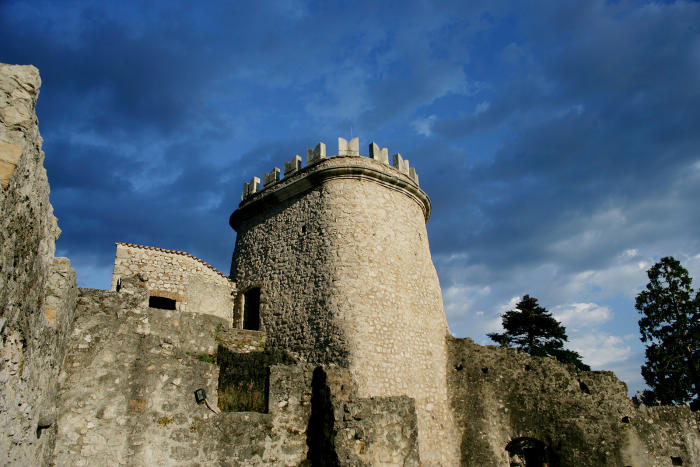
The Fort of Trsat, one of the landmarks on the cultural and tourist Route of the Frankopans (photo by Domagoj Blažević)
New visual identity of Lazareti – creative hub of Dubrovnik
Architecture as a branding medium
From the perspective of generation of emotions and images with which people can relate to, architecture is a very good medium because of its two facets that can be put to use. One is the real and physical presence that provides a unique experience and has the ability to create a distinguishable and visible symbol in the space— both from the distance and from the air, up close and so on. If it is sufficiently specific, in most cases that symbol can have multiple applications, i.e. by means of photography and the application of the concrete form of a particular building for the purpose of graphic or interactive design. In that context, some of the most successful projects that evolved into architectural icons are the Eiffel Tower in Paris, constructed on the occasion of the 1889 World’s Fair, and the Guggenheim Museum that redefined Bilbao as a destination and turned it into a place of pilgrimage for the so-called architourists. Nowadays, there are many other examples of the type, from Centre Georges Pompidou in Paris, Sydney Opera House and Louvre Abu Dhabi to Burj Khalifa in Dubai.
The second crucial facet of architecture as a branding medium is the visiting experience. The process of designing that experience starts with naming and continues with visual communication whose most important elements, such as visual identity, selection of typography and colours, signage technology, content design and selection of promotion tools, navigate the visitor through the main message of a particular building, thus creating an authentic experience in harmony with the space by complementing it, both in the physical world and in the digital media (or, at least that should be the intention). This implies elements such as scents, sounds, capacity to utilize art installations, spatial graphics and the augmented reality with the use of technology (holograms, AV technology, etc.). A large part of the visiting experience most definitely results from the content and the way it is presented, whether people can relate to it or not. However, the largest part of the visiting experience is in the hands of the architecture itself, i.e. the way architectural elements are combined, relations established, innovative constructions and materials introduced as well as the way the person is treated inside of the space. An excellent example of a memorable architectural impression designed by Daniel Libeskind in the Jewish Museum in Berlin is the experience of the Holocaust Tower figuring life during the Nazi era. The tower is room that only a few people can enter at the same time. It has an irregular shape and a black ceiling with a mere ray of light coming from somewhere. Sounds are attenuated and the visitor soon becomes for the most part aware of the sound of footsteps. We are all alone there, left in the darkness, not knowing where the exit is and when will they let us out.
In the Balkan region, it appears that the Belgrade Waterfront is the only example of modern architecture and due to its size and economic value, it has a great potential to give a new impetus to the city as a destination. In view of the preparation and implementation of the project, it remains unclear whether investors and the local authorities took into consideration the importance of the long-term role that this complex will have in the promotion of the city.
The Guggenheim Museum Bilbao, Sydney Opera House, Egyptian pyramids and pyramids in front of the Louvre Museum in Paris (photos: unsplash.com)
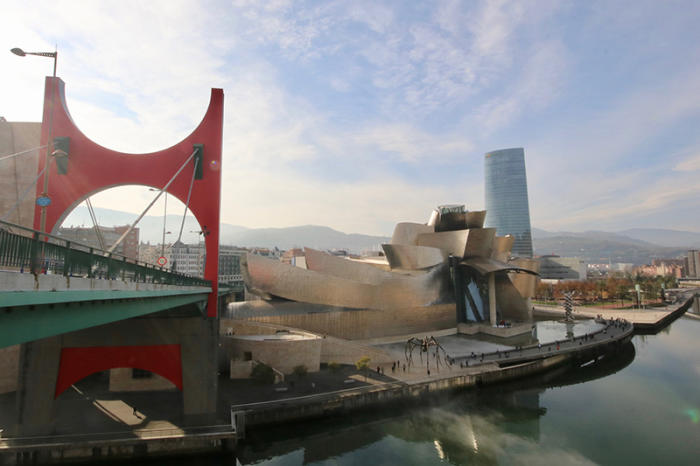
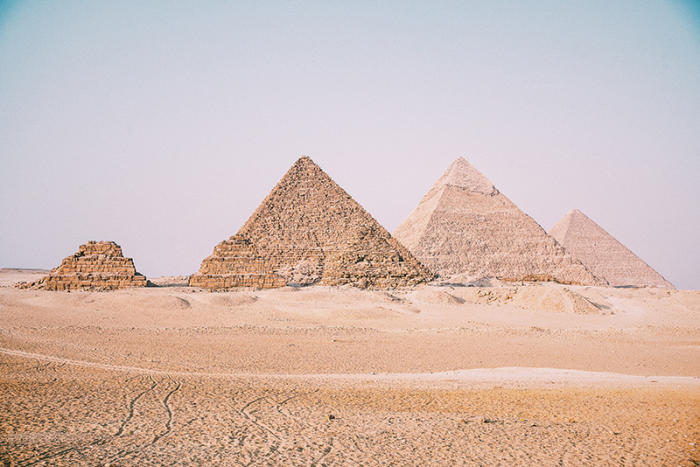
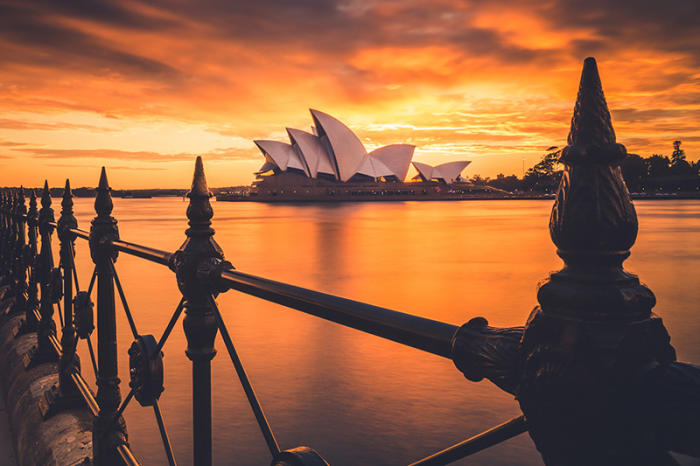
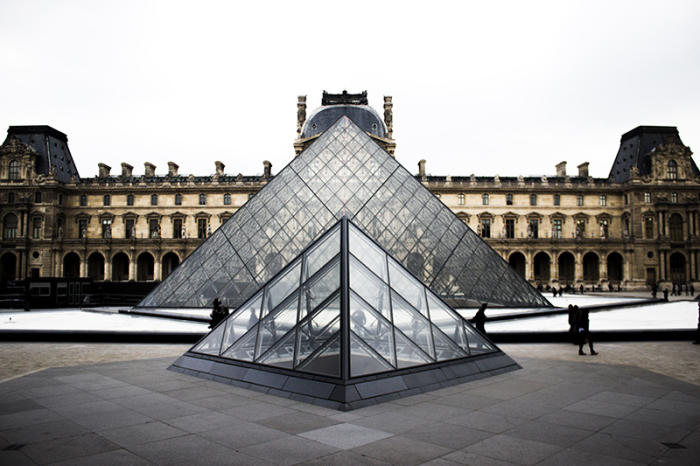
Urban districts as agents generating the spirit of destination
In addition to architectural cultural heritage and modern architecture, more attention is given to urban districts as the typology of architecture that can promote a particular city-destination. Wall Street has such global recognition that one could get an impression that it is the city itself and not just one neighbourhood in New York City while favelas of Rio de Janeiro tell the story about the life of marginalised social groups all around the world. Presently, the most interesting project focusing on the branding of new urban districts is taking place in Paris: 200 km of a new subway line and 68 new stations are under construction and until 2030 twenty existing Parisian arrondissements will get a direct connection with the periphery. The project employs 37 architecture teams and architects such as Jean-Michel Wilmotte, Dominique Perrault, Kengo Kuma and Elizabeth de Portzamparc; Ruedi Baur in charge of signage, and Patrick Jouin for urban equipment design together with a whole range of artists also including a Croatian and Austrian company Numen/For Use. The project is headed by marketing expert Rémi Babinet who is the president of Grand Paris Express, a corporate foundation established for the purpose of this project.
One should not get carried away with an idea that everything runs smoothly in the French capital nor should this project be a priori called a success. However, the long-lasting nature of this approach should really be appreciated because it surpasses short-term micro or macro political and economic situation while striving to find a common vision as the direction for future steps from which all sides can profit. But let us return to Trešnjevka mentioned at the very beginning of this text. Out of all Zagreb districts, Trešnjevka probably has the biggest potential for branding as it is extremely picturesque, full of curiosities, its name is evocative, it is packed with small artisan shops and craftsmen, dynamic young population is there together with a very specific culture of living with the green market as the focal point sharing the spirit rooted in the history of the working class neighbourhood. In the context of branding, this district has an advantage and that is the everyday way of life that can be observed and consumed throughout the year regardless of the season. By way of long-term planning and implementation organised in stages, Trešnjevka can potentially develop an authentic local brand, vibrant and distinctive.

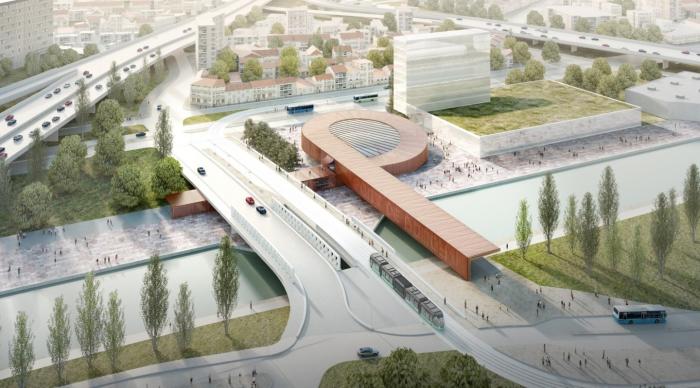
Architectural renders for the Grand Paris Express Station (source: archdaily.com)
An experience lasting longer than a single selfie
For the development of destination reputation there are diverse media available to reach visibility and emotional connection on the level of a real world experience. Such media comprise event organisation, gastronomy, culture, art etc. Architecture has proved itself an efficient tool for the development of destination brands many times. It perfectly corresponds with the times we live in when it is extremely important to intrigue and leave a good first impression but then actually deliver an experience lasting longer than a single selfie when it happens. The combination of architecture, design, quality content and consistent communication can therefore do wonders for a destination from the position of value creation and image upgrading. Wonders that are to be remembered for a long, long time.
Trešnjevka Green Market today
